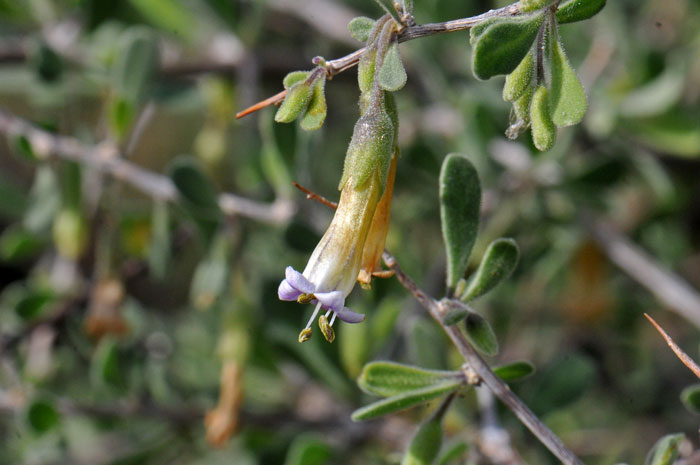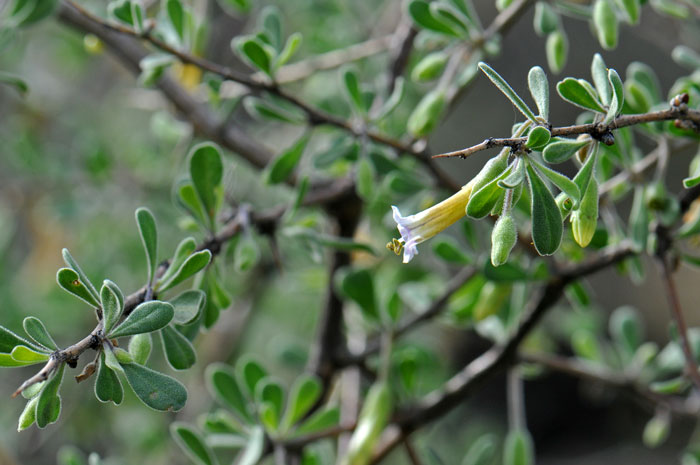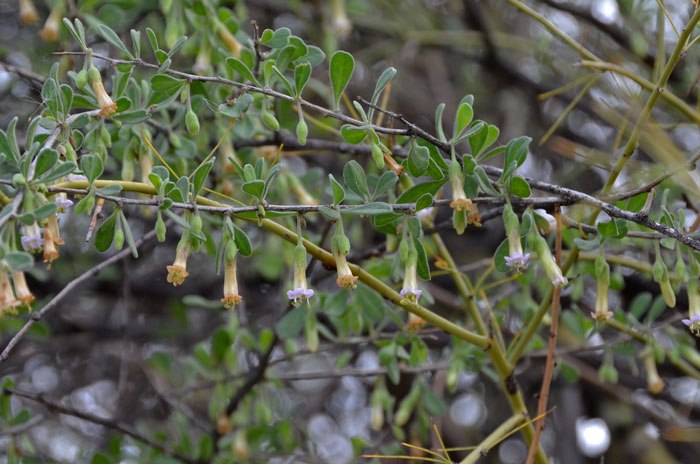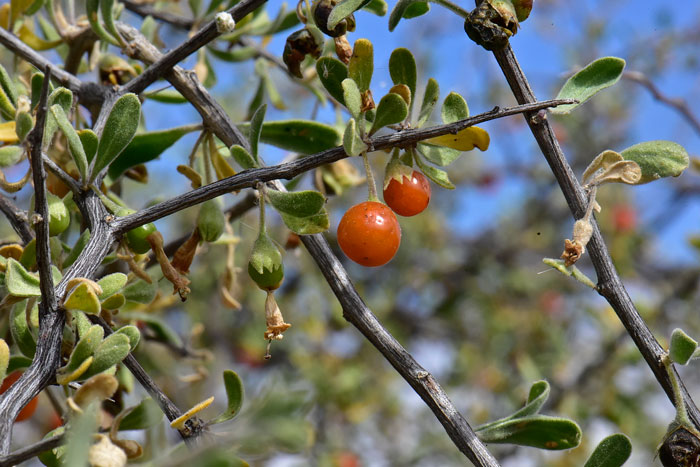Lycium exsertum, Arizona Desert-thorn




Scientific Name: Lycium exsertum
Common Name: Arizona Desert-thorn
Also Called: Boxthorn, Littleleaf Wolfberry, Wolfberry (Spanish: Frutilla)
Family: Solanaceae, Nightshade or Potato Family
Synonyms: (Lycium fremontii var. bigelovii)
Status: Native
Duration: Perennial
Size: Up to 12 feet or so.
Growth Form: Shrub; during drought, leaves drop-off and plants becomes dormant until adequate rainfall returns and plants quickly refoliate; twigs not tomentose.
Leaves: Green; plants become deciduous under drought conditions and new leaves appear with the return of rainfall; densely glandular-pubescent.
Flower Color: Lavender; flowers are pendulous; calyx lobes rarely more than ¼ inch as long as the floral tube; corolla lobed are pale lavender; fruit a plump succulent scarlet berry.
Flowering Season: January to April and throughout the year with sufficient moisture.
Elevation: 1,000 to 4,600 feet.
Habitat Preferences: Common along washes and on dry slopes, in desert or semi desert areas.
Recorded Range: Lycium exsertum is rare in the United States where it is found only in Arizona in Mohave County and in the southern parts of the state with no or few records in Santa Cruz County. This species is also native to Baja California and northern Mexico.
North America & US County Distribution Map for Lycium exsertum.
U.S. Weed Information: No information available.
Invasive/Noxious Weed Information: No information available.
Wetland Indicator: No information available.
Threatened/Endangered Information: No information available.
In the Southwestern United States, Arizona there are 11 species of Lycium, in California there are 12 species, Nevada and Texas each have 7 species, New Mexico and Utah each have 5 species. All data is approximate and subject to taxonomic changes.
Comments: The type species for Lycium exsertum is from Williams River area, Arizona (Bigelow 1854).
In Southwest Desert Flora also see Fremont's Thornbush, Lycium fremontii and Desert Wolfberry, Lycium macrodon.
Lycium exsertum has been used for food by American indigenous peoples.
Yuma Food, Beverage, Berries gathered, washed, boiled, ground, mixed with water and used as a beverage.
Yuma Food, Dried Food, Berries sun dried, stored and eaten without preparation.
Yuma Food, Dried Food, Berries washed, boiled, dried and stored.
Yuma Food, Porridge, Berries washed, boiled, strained, mashed and wheat added to make mush.
See ethno-botanical uses at Native American Ethnobotany, University of Michigan, Dearborn.

